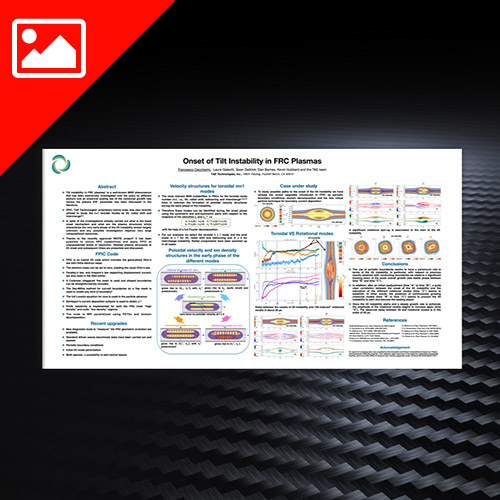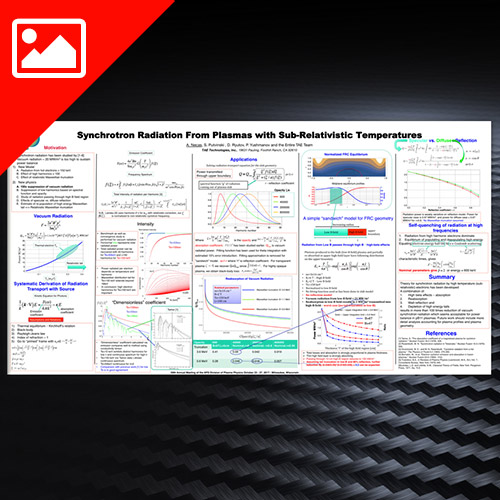
Nov 2018 | Research Library, Posters, Equilibrium, Fusion Energy, Fusion Research, Fusion Science, Fusion Technology, Modeling, Plasma Profiles, Plasma Research, Theory
October 2018 | L. Steinhauer | APS-DPP | Poster
The magnetic structure of FRCs cannot be measured directly by existing diagnostics. A new tool “Grushenka” finds the structure based on magnetic measurements at the vessel wall.

Nov 2018 | Research Library, Posters, Equilibrium, Fusion Energy, Fusion Research, Fusion Science, Fusion Technology, Instabilities, Plasma Research, Simulation
October 2018 | F. Ceccherini | APS-DPP | Poster
Tilt instability in FRC plasmas1 is a well-known MHD phenomenon that has been extensively investigated over the years by different authors and an empirical scaling law

Feb 2018 | Research Library, Papers, Equilibrium, Fusion Energy, Fusion Research, Fusion Science, Fusion Technology, Modeling, Plasma Research, Theory, Transport
February 2018 | L. Steinhauer | Physics of Plasmas | Paper
Coupled transport is the close interconnection between the cross-field and parallel fluxes in differ- ent regions due to topological changes in the magnetic field. This occurs because perpendicular transport is necessary for particles or energy to leave closed field-line regions, while parallel transport strongly affects evolution of open field-line regions.

Oct 2017 | Research Library, Posters, Equilibrium, Experiment, Fusion Energy, Fusion Research, Fusion Science, Fusion Technology, Plasma Profiles, Plasma Research
October 2017 | J.A. Romero | APS-DPP | Poster
FRC physics understanding benefits from advanced scientific analysis tools such as Bayesian analysis, which allow comparison of various physics models according to their data evidence.

Oct 2017 | Research Library, Posters, Equilibrium, Fusion Energy, Fusion Research, Fusion Science, Fusion Technology, Plasma Research, Theory, Transport
Oct 2017 | A. Necas | APS-DPP | Poster
Theory for synchrotron radiation by high temperature (sub- relativistic) electrons has been developed




